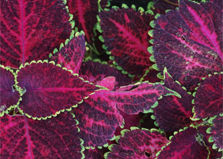
Source: Master Gardener Newspaper Articles
-https://ucanr.edu/datastoreFiles/268-124.pdf
Many of the plants available to us in nurseries have been budded or grafted. These are propagation methods that involve joining parts of two different plants together so that they will grow as one. Of course, the two plants are very closely related otherwise the union won't work properly and the result is failure. A familiar example is roses, but many landscape trees, citrus and deciduous fruit trees, grape and ornamental vines have been propagated in this manner.
It's vital that the two plants are genetically related because successful budding and grafting depends upon lining up the cambium layers of the plants so that they form new water and food vessels. Cambium is a thin layer of growing cells just inside the bark that can differentiate into either xylem (pronounced z-eye-lem), which are water conducting tubes within a plant or phloem (pronounced flow-em), which carry the nutrients made from photosynthesis in the leaves to other parts of the plant all the way down to the roots. Xylem and phloem are like arteries and veins running up and down a plant.
In budding or grafting the part that becomes the upper part of the plant is called the scion; it may be a piece of a stem or branch or a single bud. The scion is chosen because it gives the plant the desirable characteristics such as larger or smaller flowers, earlier or later flowering habit, better tasting fruit, or a unique overall plant shape or form. The art that provides the roots is called the rootstock, understock, or just stock. The rootstock usually contains desirable characteristics as well. For example it might be disease resistant to root rots and wilts such as phytophthora (pronounced fy-tof-thora), verticillium, or fusarium. Other desirable traits of rootstocks would be nematode resistance, hardier to cold temperatures, or dwarfing abilities (as for dwarf fruit trees).
Not all budding and grafting is done to create a new young plant. Sometimes a mature plant or tree is changed over to a new variety. The scion (new variety) is grafted onto the existing rootstock. Driving around the valley you'll notice that some orchards have been top worked and cleft grafted. Tops of trees have been cut off and two to four twigs are now sticking out along the periphery of the old trunks. This is a common method of converting fruit and nut trees to new varieties, usually to gain an advantage in the marketplace. In the home orchard one fruit tree could contain peach, plum, and nectarine branches grafted onto a different peach rootstock. You can also bud several varieties of peach on to one tree to extend its fruit-bearing season.
